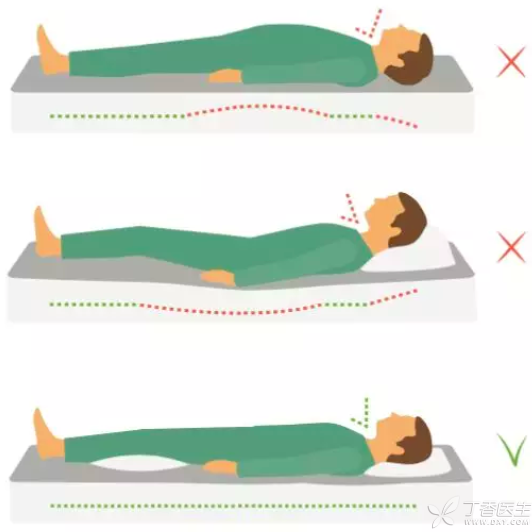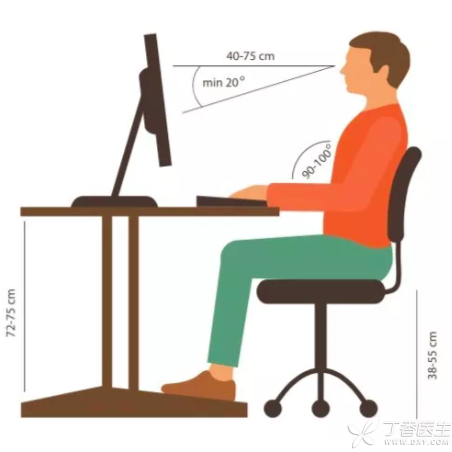
Cervical vertebra problem has gradually become one of the most health problems that cannot be ignored at present.
Do you have the same situation?
Inexplicably, I have fallen on my stiff neck again.
At regular intervals, the neck is sore and the shoulders are stiff.
It is easy to shake hands when clasping buttons/holding chopsticks.
The strength of palms and arms decreased significantly.
… …
All of the above can be counted as manifestations of cervical vertebra problems.
With the increase of age, everyone’s cervical spine will suffer from different degrees of injury. Although it is difficult to avoid this degenerative lesion, we can delay his progress in many details.
Below we have excerpted nine suggestions on delaying cervical spine injury from Dr. Guan Hanfeng’s [Cervical Spine Treatment Class] and shared them with you, hoping to be helpful to you.

Step 1 Choose a suitable pillow
As the saying goes, [a good horse is equipped with a good saddle]. Pillows are very important to cervical vertebrae. The function of pillows is actually to protect cervical vertebrae, support cervical muscles, and let them relax and rest.
The height of the pillow should be able to maintain the physiological lordosis of the cervical spine:
-
For those who are used to sleeping on their backs, the pillow height should be about the same as the width of their palms.
-
For those who are accustomed to sleeping on one side, the pillow height should be about the same as the height of their one shoulder.
However, it cannot be generalized. Sometimes it is necessary to try more.

Step 2: Choose a suitable mattress
How to choose a mattress? To be moderately hard and soft, lying on the bed, the spine should be able to maintain a neutral position instead of falling into the mattress, otherwise, it is not good to be too hard.
If you wake up and feel soreness in your neck and shoulders or backache in your waist, you may need to change your mattress.
3. Avoid bowing your head and sitting for a long time.
Avoid a long-term position in which the head extends forward.
Less look down at your cell phone, drive, play cards, watch TV and computers, and move your cervical spine every half an hour to an hour to relax your neck muscles for a few minutes.
If possible, stretch, walk, move your neck and waist to relax your muscles.
4. Cervical spine should pay attention to keep warm.
In summer, the cold air of air conditioning and electric fans should be avoided to blow directly at the head and neck.
If it is winter, it is even more necessary to use scarves, hats and other warm-keeping measures.
5. Sitting posture is important
If the work is mainly sitting, the cervical spine should be kept neutral when sitting, the eyes should be straight up (the height of the computer monitor may need to be adjusted), the shoulders should naturally droop, and the waist should be supported.

Step 6 Beware of cervical spine injuries
Be careful to prevent sudden injury to cervical spine.
When riding, pay attention to avoid sudden braking and do not ride roller coasters.
Sports activities should be carried out step by step to avoid sudden engagement in fierce sports.
7. Exercise neck muscles to delay degeneration
Regular exercise of cervical vertebrae in all directions to enhance muscle strength is helpful to stabilize cervical vertebrae and delay degeneration.
When exercising neck muscles, there are three precautions to keep in mind:
-
Move slowly and at a constant speed, and don’t exert yourself suddenly.
-
Don’t pursue too large a range of activities;
-
If you feel unwell during exercise, please stop in time.

8. Swimming is good, but you should pay attention to your posture.
Swimming (breaststroke, backstroke, especially freestyle) is conducive to cervical vertebra rehabilitation, but attention should be paid to the more standardized movements, otherwise it may backfire.
9. Protect cervical vertebrae from cigarettes
Avoid active or passive smoking, which can accelerate cervical degeneration.
These are nine tips on cervical spine maintenance. If you think it may be helpful to friends and family, please forward them to those in need.
If you need to know more about cervical spondylosis and treatment plans, click on the picture below to subscribe to the full version, with a time limit of one yuan. Don’t miss it….

